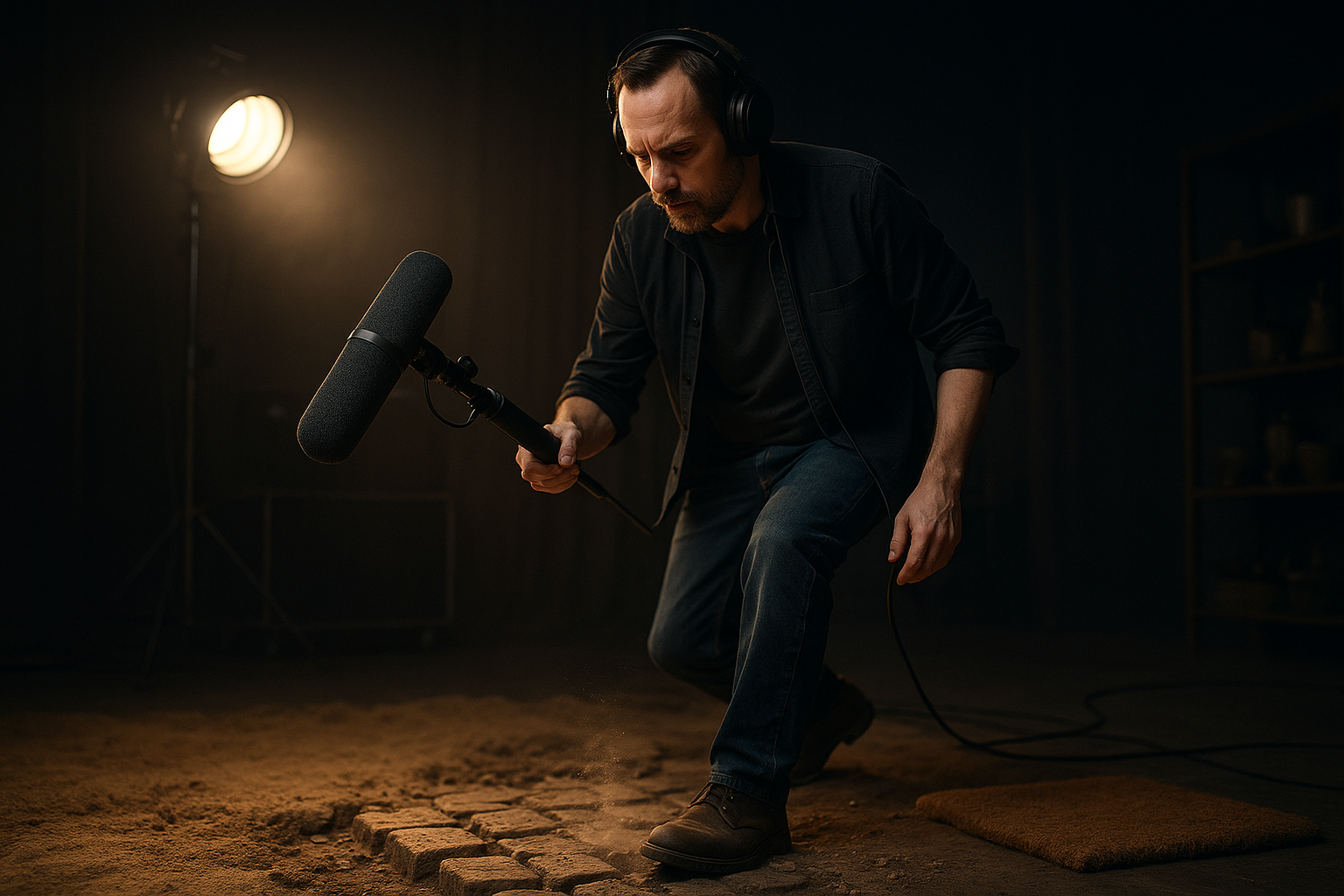Shining the Spotlight on the Art of Foley in Modern Cinema
Introduction: Immerse yourself in the often-overlooked realm of Foley artistry—an essential yet enigmatic cog in the cinematic machine that adds depth to our movie-watching experiences. This article delves into the history, current trends, and significance of Foley art in the film industry.

A Historical Perspective of Foley Art
Foley art, named after Jack Donovan Foley, has been an integral part of filmmaking since the era of ‘talkies’ or sound films. In the 1920s, silent films were replaced by sound films, and Foley, a Universal employee, headed the transition. He realized that live sound effects added during post-production could enhance a film’s realism and emotional impact. These effects, produced by everyday objects, could replicate sounds ranging from footsteps to rustling leaves, contributing a new dimension to cinematic storytelling.
Foley Art Today: More Than Just Background Noise
Fast forward to today, Foley art has evolved and adapted to the needs of contemporary cinema. The advent of technology has not replaced Foley artists; instead, it has extended their range. They now work with sophisticated equipment and software to produce and fine-tune a wide array of sounds. From the crunching of snow under heavy boots in ‘The Revenant’ to the clattering lightsaber duels in ‘Star Wars’, Foley artists create the auditory magic that brings films to life.
The Impact of Foley Art in Cinematic Storytelling
The significance of Foley art extends beyond mere noise-making. It plays a critical role in shaping a film’s narrative and enhancing the audience’s emotional engagement. The strategic use of Foley sounds can heighten tension, evoke emotions, and underscore character traits. For instance, the ominous creaking of a door can build suspense in a horror movie, while the sound of a character’s unique footsteps can subtly convey personality traits.
Reception and Recognition of Foley Artists
Despite their crucial role, Foley artists often remain unsung heroes of the film industry. The recognition for their craft is minimal within the industry’s major award platforms. However, a growing awareness about the intricacies of Foley work is leading to changes. More filmmakers and audiences are acknowledging the artistry and skill involved in Foley work, and its contribution to the overall cinematic experience.
Future Trends: The Changing Soundscape of Cinema
In an era where virtual reality and immersive experiences are gaining traction, the role of Foley art is set for a transformation. Foley artists are experimenting with 3D audio and spatial sound design, pushing the boundaries of what can be achieved sonically in films. As cinema continues to evolve, so will the art of Foley, proving once again that it’s more than just background noise—it’s an essential part of cinematic storytelling.
In conclusion, Foley art is a fascinating aspect of filmmaking that often goes unnoticed. But as we dive deeper into the world of cinema, we start to appreciate the subtle artistry behind the sounds that enrich our movie-watching experience. The world of Foley artistry is an echo of the past, a resonance of the present, and a reverberation of exciting future possibilities.




